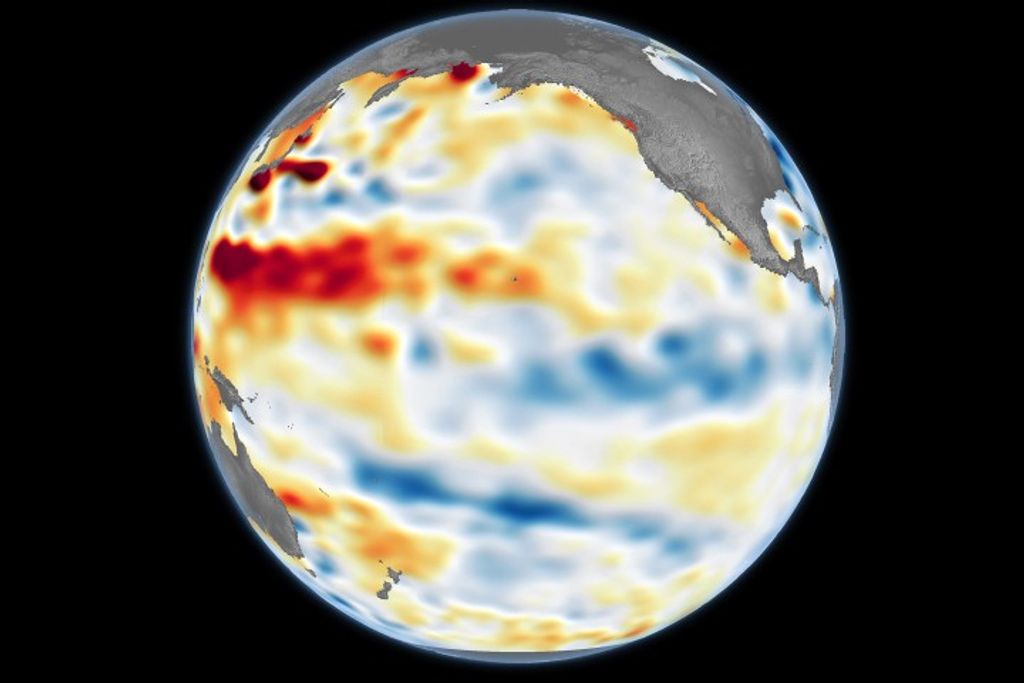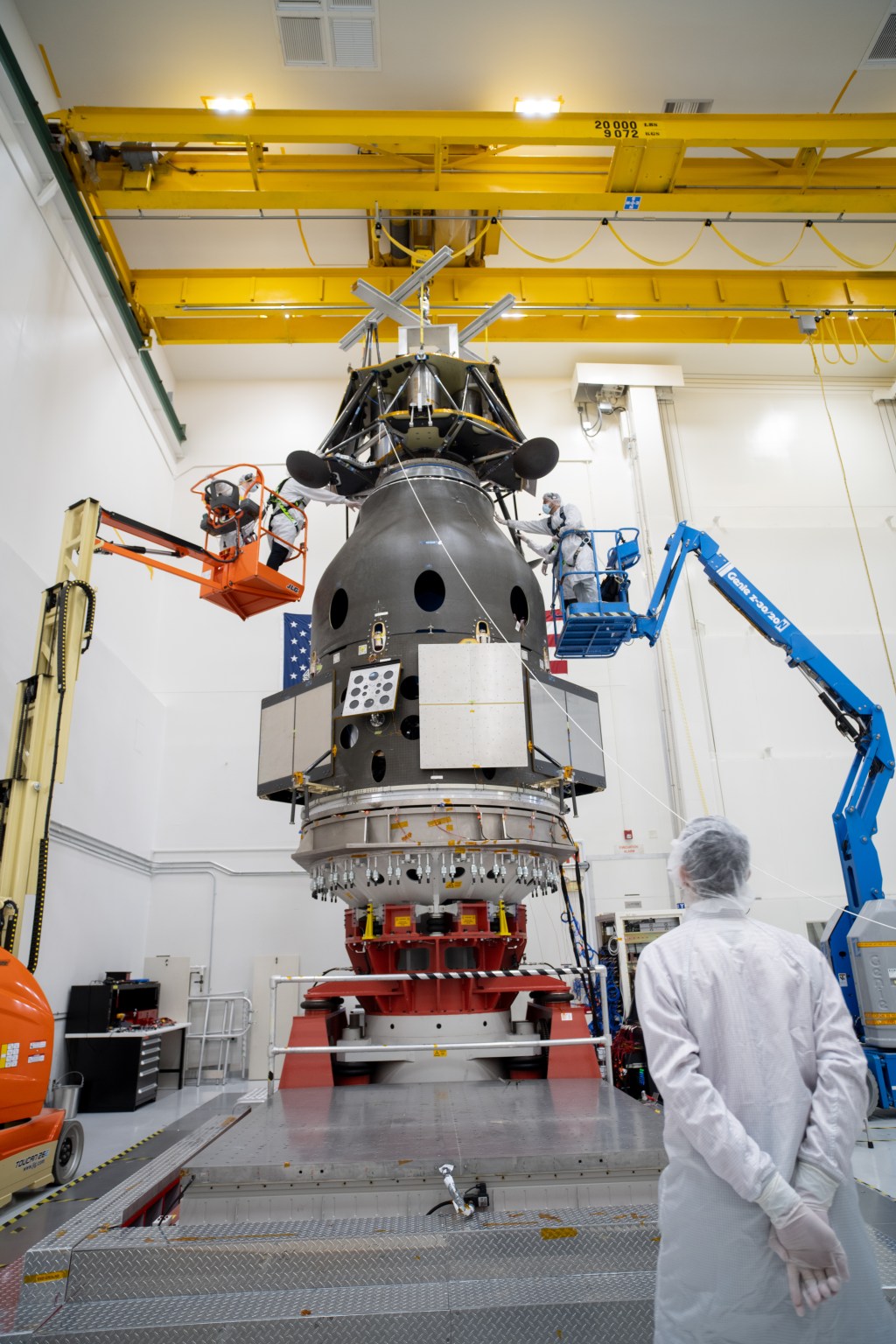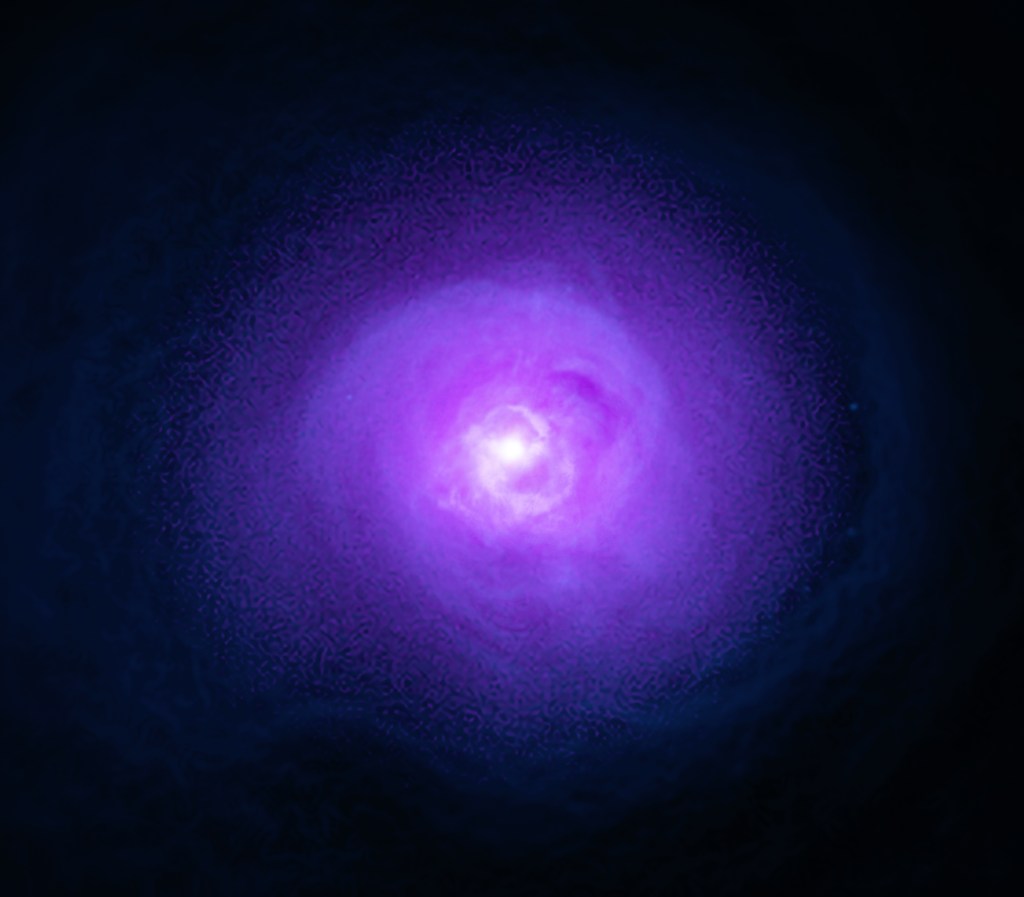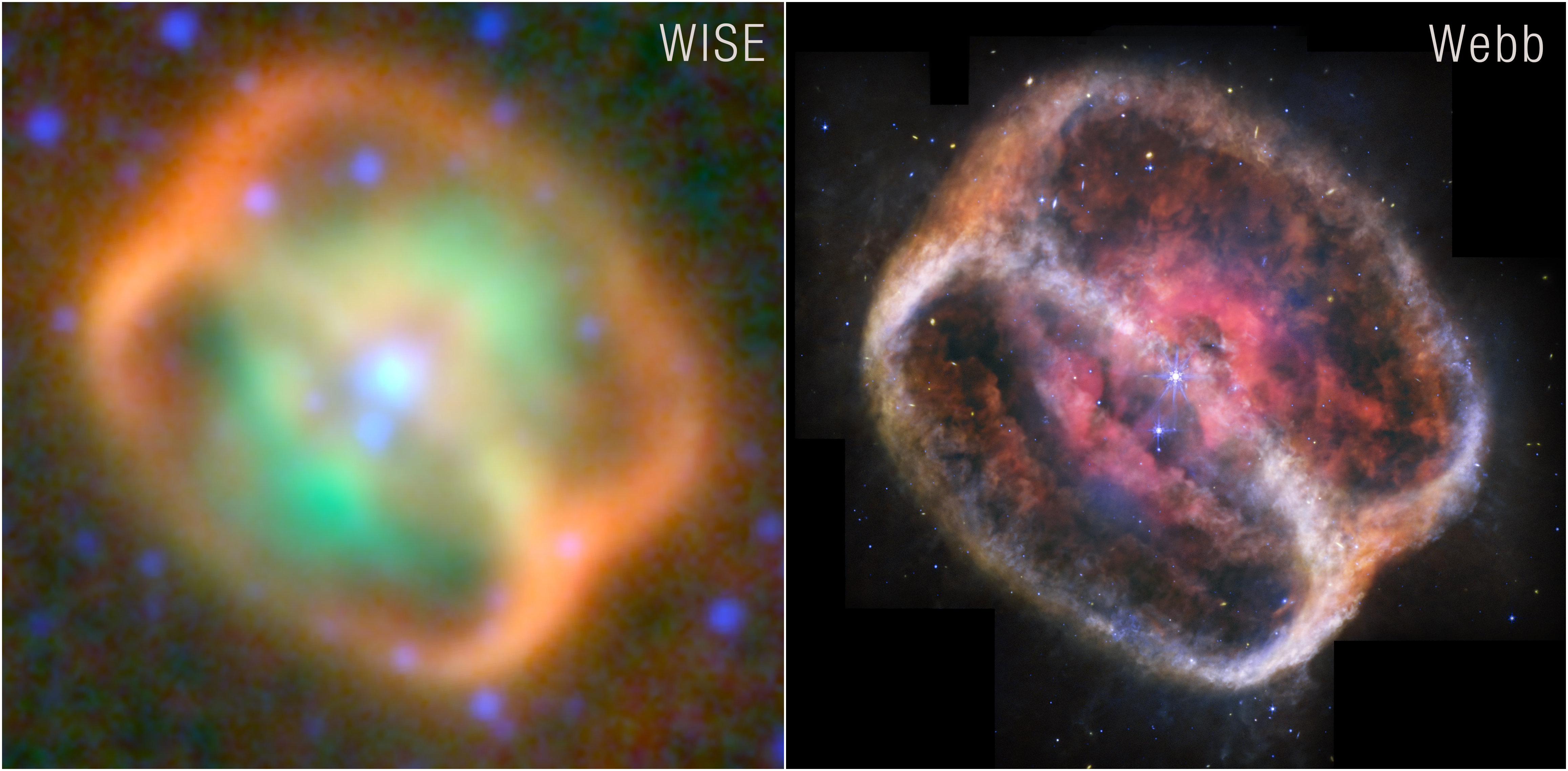1 min read
Planetary Nebula NGC 1514 (MIRI Image)
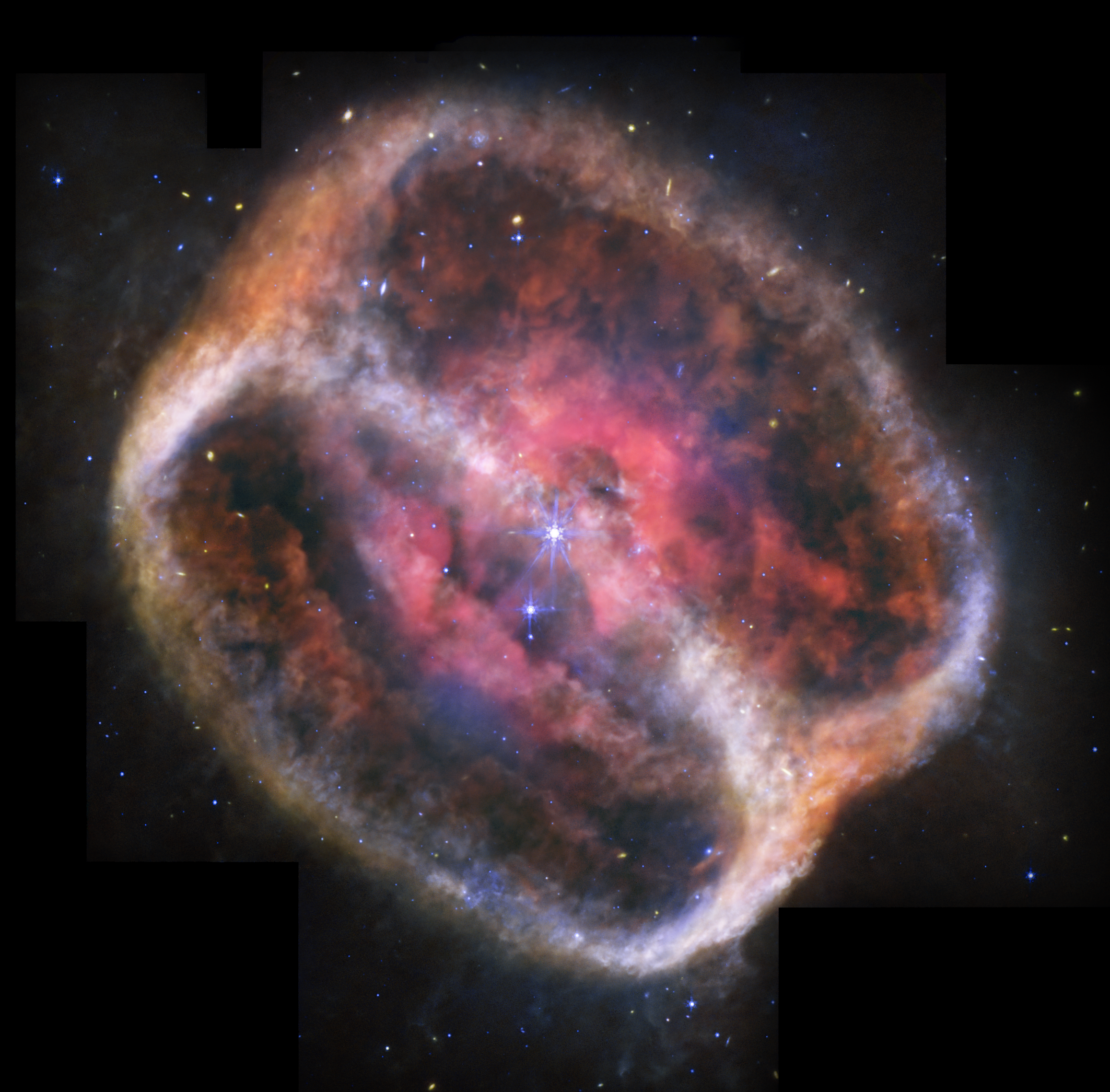
NASA’s James Webb Space Telescope has taken the most detailed image of planetary nebula NGC 1514 to date thanks to its unique mid-infrared observations. Webb shows its rings as intricate clumps of dust. It’s also easier to see holes punched through the bright pink central region.
About the Object
- R.A. PositionR.A. PositionRight ascension – analogous to longitude – is one component of an object's position.04:09:17
- Dec. PositionDec. PositionDeclination – analogous to latitude – is one component of an object's position.+30:46:33
- ConstellationConstellationOne of 88 recognized regions of the celestial sphere in which the object appears.Taurus
- DistanceDistanceThe physical distance from Earth to the astronomical object. Distances within our solar system are usually measured in Astronomical Units (AU). Distances between stars are usually measured in light-years. Interstellar distances can also be measured in parsecs.About 2,300 light-years
- DimensionsDimensionsThe physical size of the object or the apparent angle it subtends on the sky.Image is about 4.2 arcmin across (3 light-years)
About the Data
- Data DescriptionData DescriptionProposal: A description of the observations, their scientific justification, and the links to the data available in the science archive.
Science Team: The astronomers who planned the observations and analyzed the data. "PI" refers to the Principal Investigator. - InstrumentInstrumentThe science instrument used to produce the data.MIRI
- Exposure DatesExposure DatesThe date(s) that the telescope made its observations and the total exposure time.27 September 2023, 29 January 2025
- FiltersFiltersThe camera filters that were used in the science observations.F700W, F1280W, F2550W
- Object NameObject NameA name or catalog number that astronomers use to identify an astronomical object.NGC 1514, Crystal Ball Nebula
- Object DescriptionObject DescriptionThe type of astronomical object.Planetary nebula
- Release DateApril 14, 2025
- Science ReleaseWith NASA’s Webb, Dying Star’s Energetic Display Comes Into Full Focus
- CreditImage: NASA, ESA, CSA, STScI, Michael Ressler (NASA-JPL), David Jones (IAC)

The Webb image is a composite of separate exposures acquired by the MIRI instrument. Several filters were used to sample wide wavelength ranges. The color results from assigning different hues (colors) to each monochromatic (grayscale) image associated with an individual filter. In this case, the assigned colors are: Blue: F770W, Yellow: F1280W, Red: F2550W

Related Images & Videos
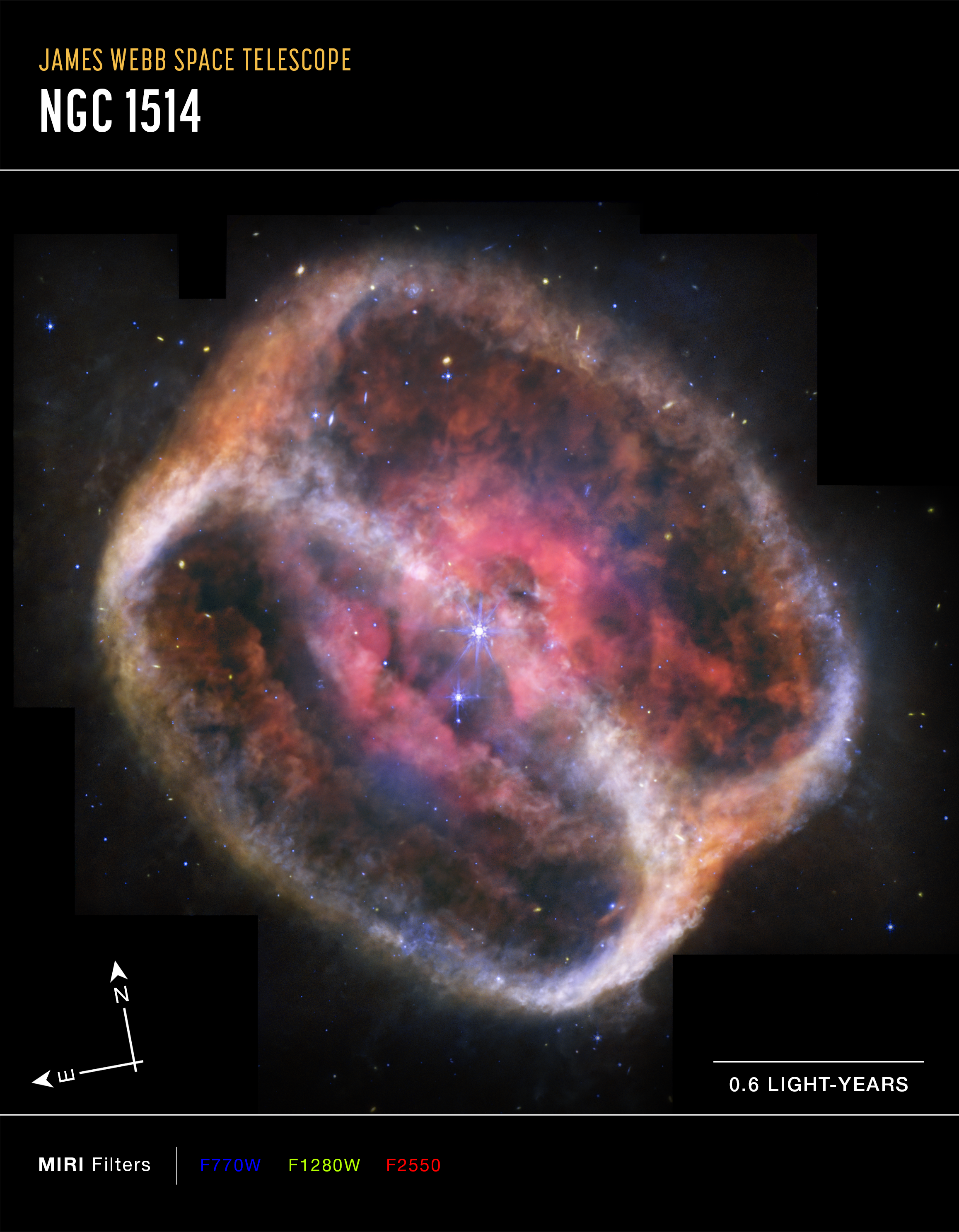
Planetary Nebula NGC 1514 (MIRI Compass Image)
This image of planetary nebula NGC 1514, captured by the James Webb Space Telescope’s MIRI (Mid-Infrared Instrument), shows compass arrows, scale bar, and color key for reference. The north and east compass arrows show the orientation of the image on the sky. Note that the...
Share
Details
Laura Betz
NASA’s Goddard Space Flight Center
Greenbelt, Maryland
laura.e.betz@nasa.gov
NASA, ESA, CSA, STScI, Michael Ressler (NASA-JPL), David Jones (IAC)










